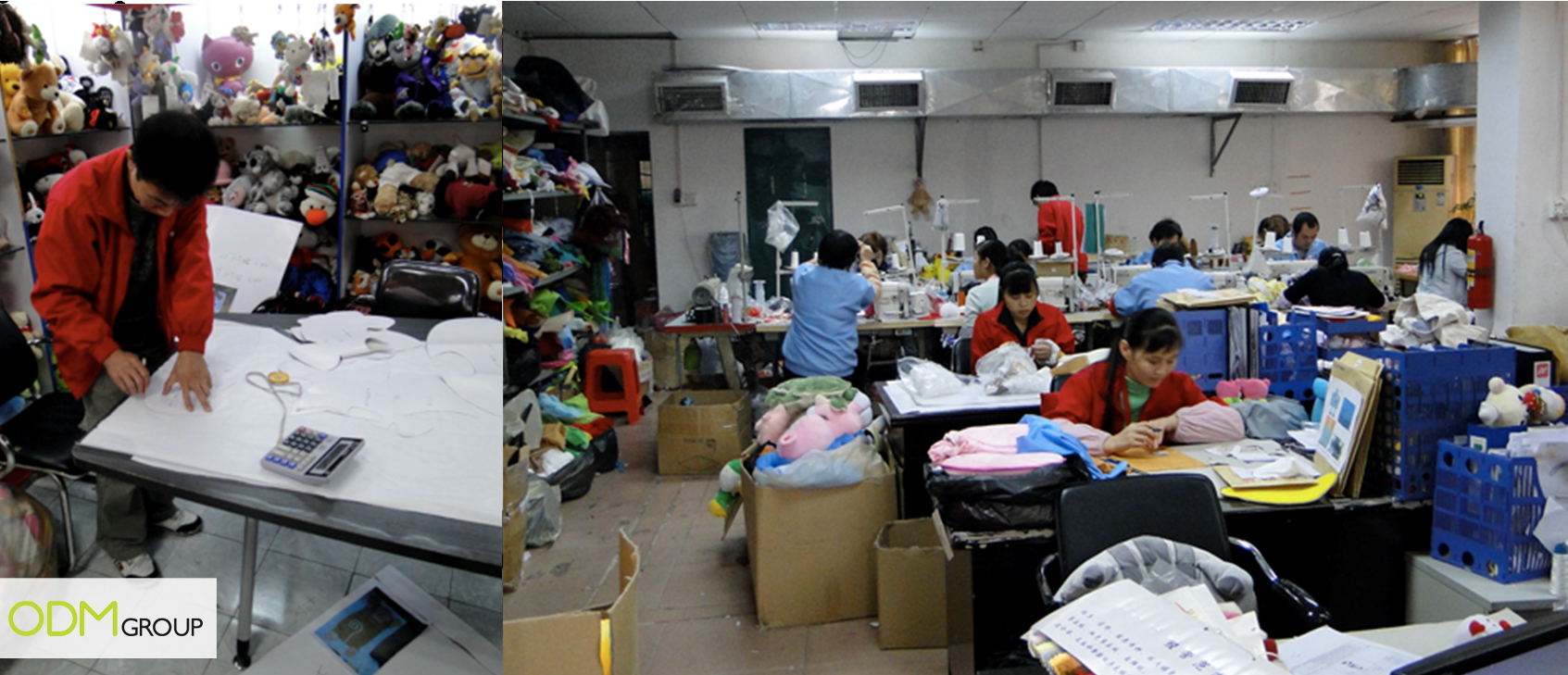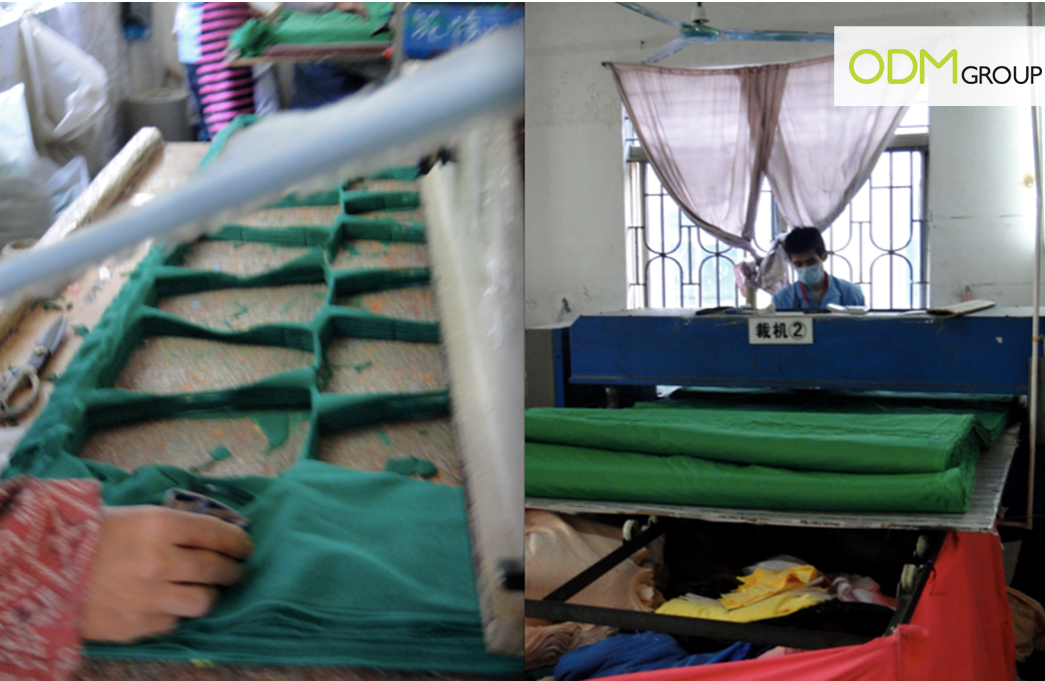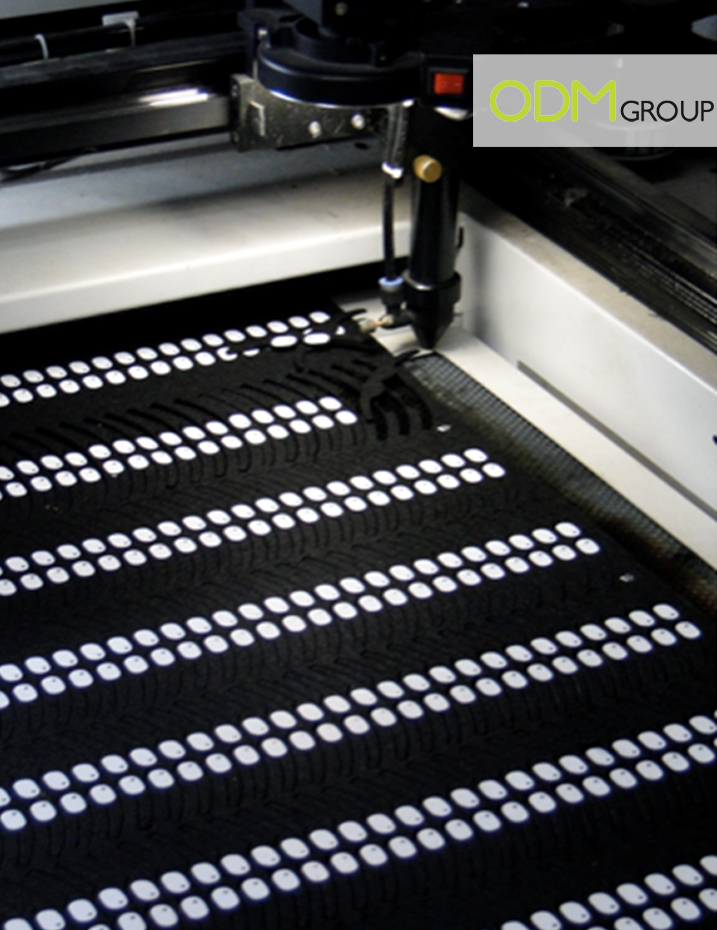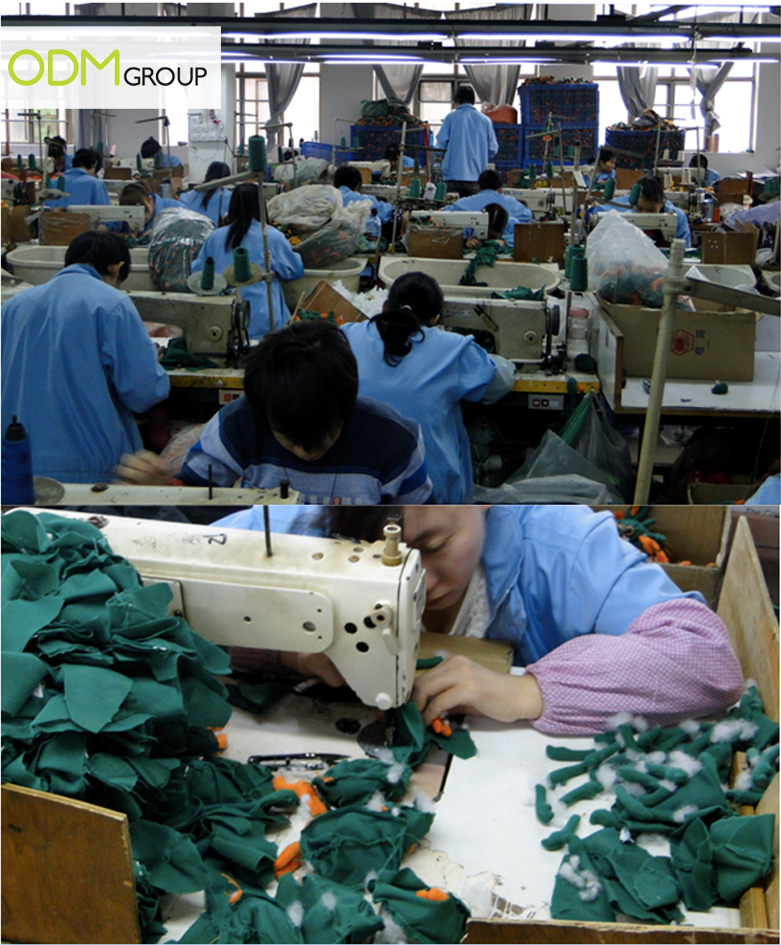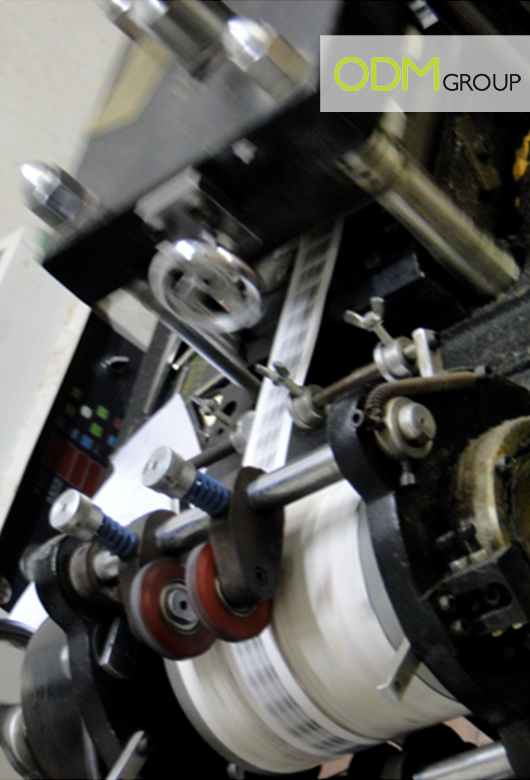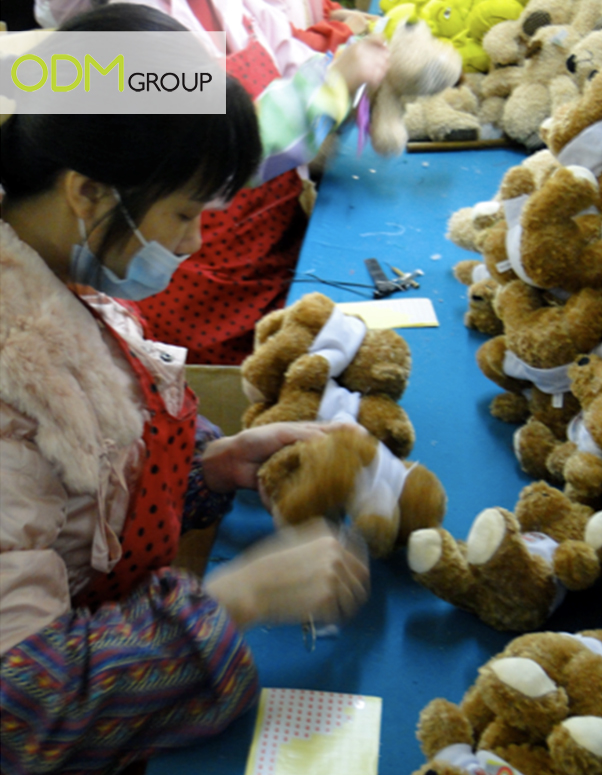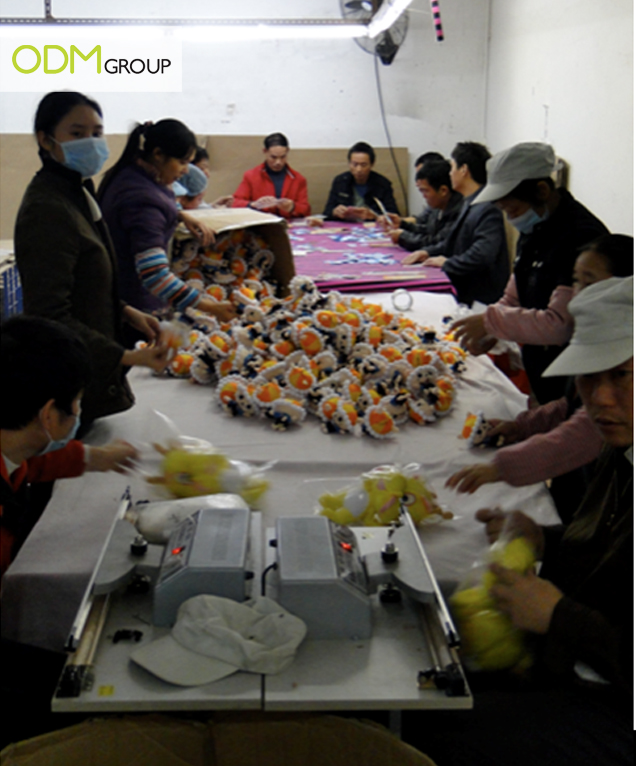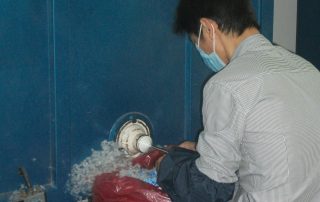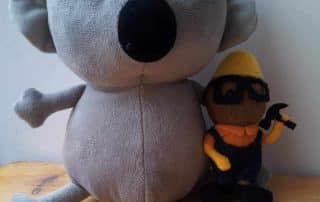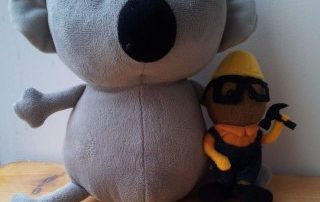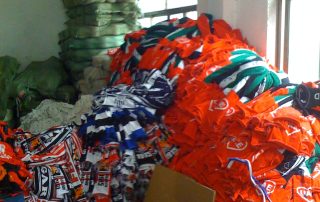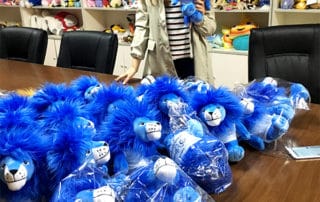The plush toy manufacturing process entails several stages that include both automated and manual labour. This blog will explain every step of the plush toy production process, from realizing a sample all the way to mass production, to help you create plush toy that suits your needs!
Step one – Making a sample: Every time you place an order for a new plush, it is important to develop a sample with the factory you wish to work with. Usually, a plush factory will require pictures, blueprints or a previously existing model in order to replicate the sample. It is always good to make a sample before confirming an order, allowing you to have final approval before launching mass production in order to know exactly what your plush will look like.
Step two – Cutting: Once you have approved the sample its time to start mass production of the promotional plush. The first step is cutting the fabric. There are many ways to cut the fabric, by using a machine or a mould.
Another technique to cut a promotional plush toy fabric is by using a laser cutting machine. Usually, these machines are used when the fabric being cut requires more attention to detail and accuracy. Laser machinery is extremely precise and can cut the fabric into small shapes.
Step Three- Sewing: Once all the fabric is cut it is transported to the sewing department. Usually, sewing departments in a plush factories are comprised of workers and sewing machines. This task is purely manual labour. Workers will sew the textile fabric parts together using sewing machines.
Optional – Embroidery: If certain fabric requires embroidery they will be embroidered before being sewn to the rest of the fabric. Embroidery machines are purely automated and do the job quite rapidly depending on the complexity of the embroidery required.
Step Four- Joining: the embroidery is finished, the fabric needs to be sewn together in order to obtain a full plush body shape.
Additional parts can be sewn on at this moment such as hair or other kinds of fabric in order to create the desired plush design required.
Depending on the type of plush you’re interested in producing, some additional steps may be required. For custom stuffed animal clothes, thus additional fabric will need to be cut and sewn and eventually put on the plush doll.
Step Five- Stuffing: A crucial step of the production of plush toys is the stuffing, referring to the inside of the plush toy. All plush dolls are stuffed with material to make the plush bulky and give it the body volume required. This is a very important step. Each plush needs to be stuffed to the same proportion as the entire order. This is important or else the promotional plush toys will be bulkier than others, which may end up giving a strange look to the final product.
Step Five- Labels: All plush toys around the world require labels. Labels are programmed (bar-code) and designed by computer. Most of the time you may obtain these from your end client or you will need a designer to make one for you. It is very rare that factories in China have the ability to design the label. We recommend using our designer services or your in house capabilities for this task. Factories have machines that print the labels. Any size label is possible to create upon your request. Labels are printed as one long strip, thus they need to be cut and eventually are passed along to the sewing the department to be sewn to the plush. Labels are important to include on plush toys. They usually include a bar code, or directives of how to wash the doll or the substances in the plush, health standards that the product respects etc.
We have done several plush orders in the past where we also included a plastic hand-tag in order to facilitate holding the plush in retail stores.
Step Six- Quality Control: A plush factory should have internal quality control departments. These units use a perfect sample of the wholesale plush being inspected and compare all units with the perfect model. The employees will pull on the limbs and sides of the plush in order to make sure that the sewing is sufficiently strong in order to avoid the plush to fall apart.
Units that are found defective are discarded. If the problems are extremely important the plush is destroyed and the material is thrown out since it is not reusable. If there are small problems, the defective unit will be put aside in order to rework the specific problem.
Even though Quality Control departments are frequently found in plush factories we always recommend to perform independent quality control inspections during the production and before the final goods are shipped out of the factory. This allows you to obtain an independent perspective of the job done on your order.
Step Six- Packaging: Packaging is the last process of the production process. It is very important to use strong carton boxes in order to avoid damage to the merchandise during shipment. There are several ways to package plush toys. The most basic manner is to seal each piece in a polybag and put many units inside a large carton box.
Some plush orders require higher-end packaging in order to have a higher presentation once on the retail shelf. A box packaging for each unit can be used to package the plush. Each piece of the plush will have its own packaging with full-colour print requested by the client. These kinds of packaging are more costly and will increase freight costs but will make your plush stand out on the retail shelf!
How can ODM help?
Use our expertise in making plush toys, we can help you with any kind of production of plush toys! Contact us for further information and if you are interested in receiving competitive pricing for a plush project you are looking to manufacture. Feel free to place an inquiry for a quotation on a promotional item today. We also recommend contacting our in-house design team Mindsparkz here for all design inquiries. Should you wish to find out more about our packaging solutions contact us here.
Check out some more of our blogs relating to manufacturing processes:
The price of making a perfect approval sample of drinking glasses using the machine-blown process is expensive. Let’s go over some of the costs listed by our Buying Office in Shanghai. Check out this blog to find out more!
ODMasia is currently producing promotional knitted scarves in China for our clients and we arranged a factory visit/audit together with the customer earlier in the week. Check out this blog to find out why promotional scarfs are a great idea and how they are being produced:
Deciding which factory to work with in China is very difficult. It is important to get advice from experts with a strong base in China, with a true understanding of your company and market. This blog gives you some tips to find the right partner and manufacturer to work with. Find out more:
In this blog, we highlighted the possibility of orders delay at Factories in China. To prevent such issues, we recommend signing a contract with penalty terms if this happens. Here is our encounter when negotiating a contract, and why it is important to do so. Check it out:
Take a look at these other posts on manufacturing plush toys:
Plush toys are great promotional products to offer to your customers. However, there are certain issues when producing plush toys in China, such as design complexity, testing requirements, etc. We will discuss these issues and requirements in this blog, check it out!
We often schedule visits with the factories we collaborate with. This not only ensures the quality standards are respected but also allows us to check that production is on schedule. Here are the multiple stages of producing plush toys explained. Find out more:
Frequently Asked Questions (FAQ):
What are plush toys made of?
Plush Toys are commonly made out of synthetic fibers. An example would be - polyester.
What are some advantages of plush toys?
Plush toys are easy to customize and cost-effective for brands to promote their licensed characters or brand logo.
What's the difference between plush toys and stuffed toys?
Both are just two commonly used terms that mean the same thing.
